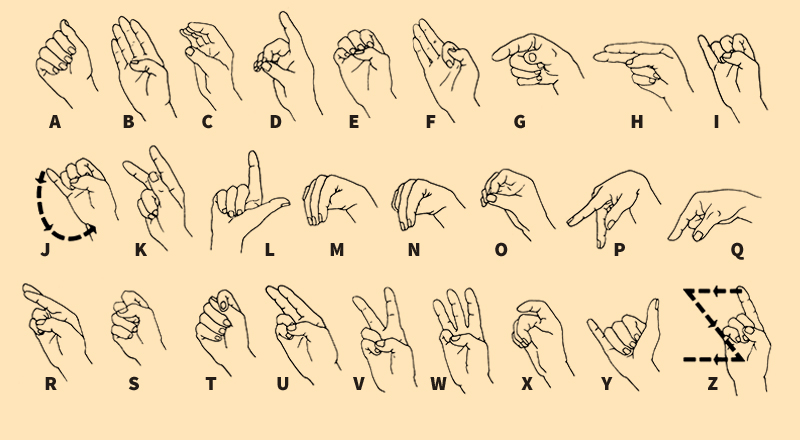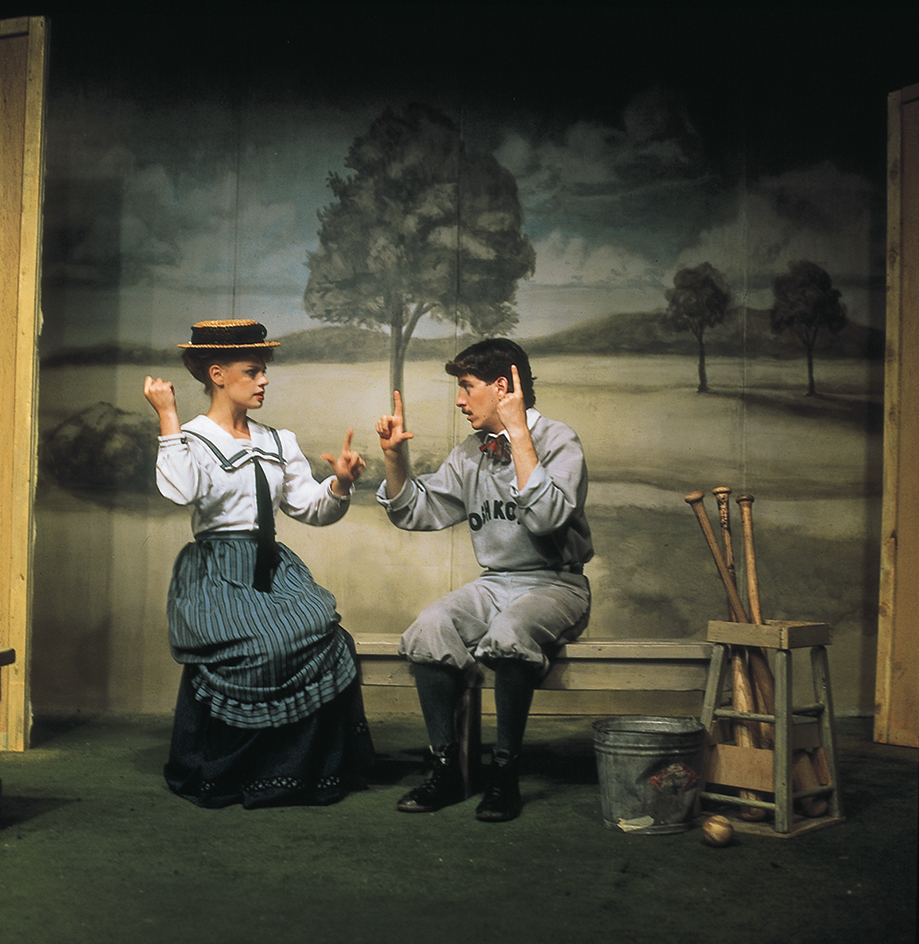Sign language is a system of communication that uses the hands, body, and face to produce messages that can be seen. In this way, sign languages differ from spoken languages, which use speech and can be heard. Sign languages are often used by people who are deaf and by hearing people communicating with them.
There are many sign languages worldwide. These languages arise wherever there are deaf people in contact with one another and able to form a social community. Sign languages are typically named for the region where they are used, such as French Sign Language. The sign language used in most of North America is American Sign Language (ASL).
Children learn sign language naturally if they are born into a family with deaf parents who sign. The children learn to sign through daily contact with sign language whether they are hearing or deaf. They progress through the same stages of development—from babbling, to single words, to short sentences—as hearing children go through learning a spoken language. They also reach these stages at about the same age.

Like spoken languages, sign languages have a vocabulary and grammar and syntax—rules for making words into sentences. The vocabularies and grammatical rules differ from language to language, so when deaf people from different countries meet, they may not understand each other. In addition, the structure of a sign language differs from the local spoken language. For example, although people speak English in both the United Kingdom and the United States, British Sign Language and American Sign Language are not the same.

Sign languages have formed in deaf communities for centuries, at least, and perhaps longer. The earliest documented use of signing occurred more than 500 years ago in the Ottoman Empire, which was based in what is now Turkey. The newest sign language is in Nicaragua. It arose in the late 1970’s, when new programs in special education brought deaf children together in that country in significant numbers for the first time.
See also Deafness; Indigenous peoples of the Americas (Language); Koko; Lip reading.
